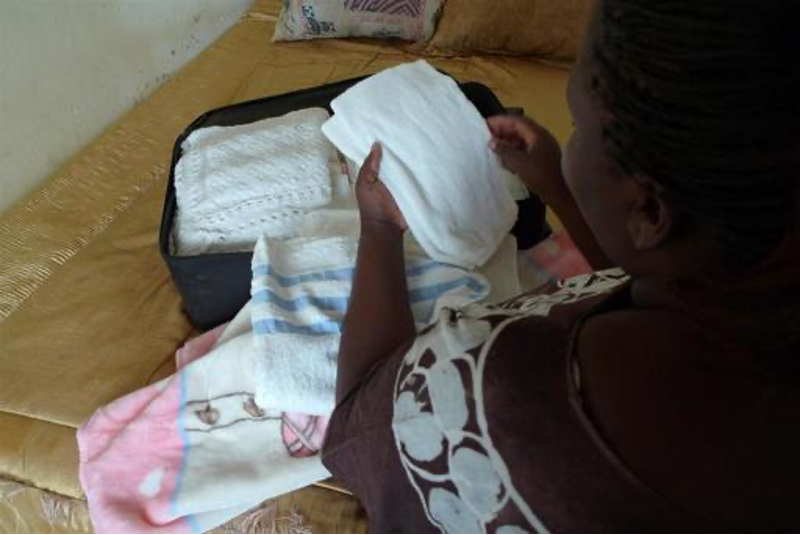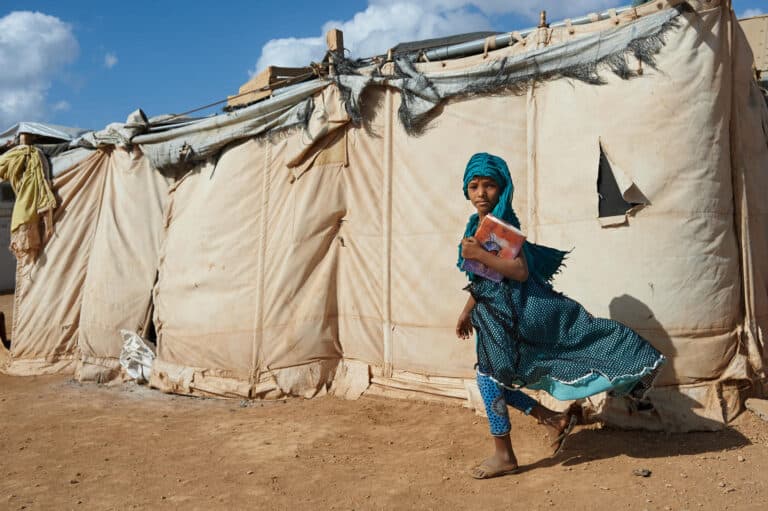Oyele, who is from Nigeria, and her husband were eagerly anticipating the arrival of their first child. But then, tragedy struck: The baby was stillborn. In a flash, Oyele’s dreams of motherhood vanished.
“I have little to say about him because I did not see him. He was taken away before I became fully conscious. My husband said he looked like me, but I wish I had seen him myself. He was a boy. The loss of my baby changed so many things about me. Telling people was so shameful. People [said] it was my fault that the baby died, and I started blaming myself too, telling myself that I was not careful enough. I went home [from work] every day crying.”
But Oyele had done nothing wrong. She later learned she had pregnancy-induced hypertension — a life-threatening condition to mother and baby if undetected. With proper health care, Oyele’s baby might be in his mother’s arms today. And the space where she holds her shame and loss might instead be filled with pride and joy.
A heavy load to bear
Oyele’s deep sense of failure and the accompanying social stigma are common among mothers of stillborns. Persistent taboos surrounding stillbirths in many societies leave many women to suffer in silence. They face a long, lonely road to recovery, including economic and emotional consequences.
Yet these mothers are anything but alone. Millions of women around the world share their grief. Every 16 seconds, a pregnant woman delivers a stillborn baby. Over the last two decades, 48 million girls and boys have been lost.
Tragically, the majority of these stillbirth deaths – defined as babies born with no sign of life at or after 28 weeks of gestation – are preventable. In many cases, quality antenatal care and care at birth would have been the difference between life and death. Over 40 per cent of all stillbirths occur during labour — highlighting the urgent need for all mothers to access improved monitoring and emergency obstetric care.
Recognizing the problem
The magnitude of this global public health issue is likely far greater than we know. Worldwide data tracking on stillborn deaths remains well below standard. In 62 countries, no data or no quality data capture these events. For parents who have lost a child to stillbirth, this lack of data means their stories remain untold — and that little to no action is taken to prevent these deaths in the future.
The data we do have tell us that the burden of stillbirths is not evenly shared, with up to a 23-fold difference across countries. Women in sub-Saharan Africa and Southern Asia bear the greatest burden, where three in four of all global stillbirths occur. Across low- and middle-income countries, too few women receive timely and high-quality care to prevent stillbirths.
And women from disadvantaged groups and in rural settings around the globe – across low- to high-income settings – are also more likely to deliver a stillborn than women from other groups in their country.
Left out of the conversation
“Seeing a woman beg you to save her child is heart wrenching. The reduction in the rate of stillbirth is possible if accessible and affordable health care services become available to all pregnant women.”
– Idowu, a midwife from Nigeria, which is struggling with one of the highest stillbirth rates in the world
Despite the scale of stillbirths – and the fact that many of these deaths are preventable — they remain a largely invisible, unrecognized and underresourced issue. Stillbirths are often absent from current national and global policies and programmes. Governments are not regularly setting targets to reduce stillbirths, which means a lack of accountability for action.
It is time for this inaction to end. It is time to highlight the urgency of this unnecessary loss of life. It is time to renew our collective commitment and address stillborn deaths head on, investing in proven measures that save lives.
Steps to a brighter future
Progress is possible. We have seen the power of sound policy, investment and programmes. In 14 countries, including three low- and lower-middle countries, the stillbirth rate was cut by more than half between 2000 and 2019. These success stories can be replicated in every country around the world. The price for inaction is unacceptably high: If current trends continue, another 20 million stillbirths will occur by 2030.
UNICEF, WHO and our many important partners know we must do better, and we must do it quickly. Collective action is needed now to end preventable stillbirths and ensure as many pregnancies as possible end with a joyful new arrival. The women who have lost their children are depending on governments, UN agencies, health workers, donors and other partners to do better, for they will never forget:
“Shayen. I want the world to know and remember his name. I want people to remember that although he was born sleeping – he was STILL BORN. And that he is very much a part of our family.”
– Priya, the United Kingdom
For more information, see A Neglected Tragedy: The global burden of stillbirths, the first-ever stillbirth report by the UN Inter-agency Group for Child Mortality Estimation (UN-IGME) as well as the UNICEF data page on stillbirths.



